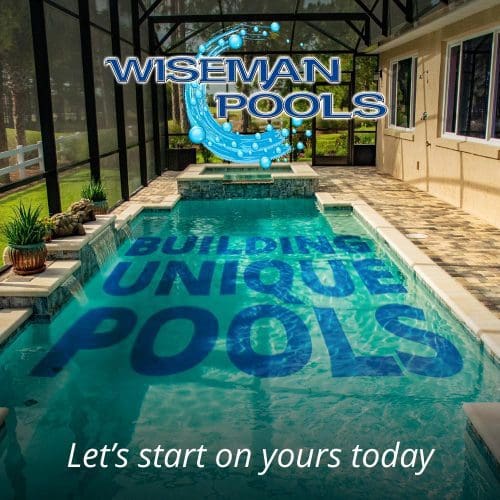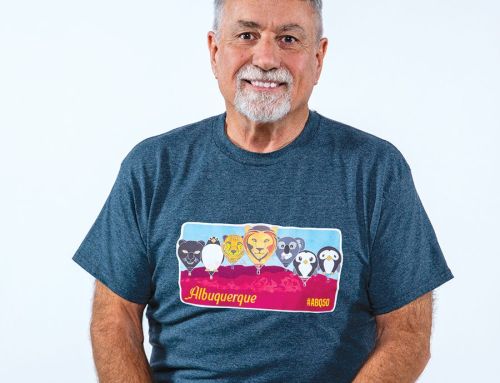By Akers Editorial
Diving Deep into Mayan History
Truth surfaced when treasure hunter Bill McGehee explored the murky depths.
Bill McGehee knew without a doubt, the moment his hand touched the submerged wall, that the direction of his life had been changed forever.
It was the first dive job for Expeditions Unlimited Inc., the company he and his friend and business partner Norman Scott had recently formed. Their challenge? Locate Sir Henry Morgan’s sunken city in Port Royal, Jamaica and bring artifacts to the surface that hadn’t seen the light of day for centuries.
“Norman was very interested in Sir Henry Morgan’s sunken city,” Bill explained. “Morgan was a famed pirate and would attack Spanish, French and English galleons and was one of the best pirates there was. The English were so devastated by him taking their ships they knighted him so he wouldn’t ravage the English ships anymore.
“In Jamaica Bay there were two peninsulas, and Morgan put a fortress on each side,” Bill continued. “You had to go through those fortresses to get into Port Royal. He controlled the whole island.”
In the late 1600s, an earthquake sank most of Port Royal. “Norman’s interest was to go down and recover the city,” Bill explained.
Norman arranged the financing for the expedition, and after considerable planning, the two treasure hunters and their crew set out for Port Royal.
Bill’s role was to carry the heavy equipment and assist the more experienced divers who had been hired for the recovery.
Due to several unforeseen circumstances, on the first day of their dive, Bill, with no real experience under his belt other than training dives, was the only one available to dive.
“I went down to the bottom and nothing happened right away. We had these huge underwater vacuum cleaners we call air lifts. I started moving the air lift and reaching out.”
“Wow, a wall,” the now 78-year-old remembers saying to himself as his hand touched a submerged barrier.
“When I found the wall, I started excavating with the air lift and removed some of the silt, then I came to a round object that was a wheel. Attached to the wheel was an axle and attached to the axle was the bed of a wagon that carried a cannon.
“Right at that moment my entire life changed,” he said. “I thought this had to be the most interesting aspect of all of life.
“I am one of the few people in the world who for my entire life, have done nothing but play.”
— Bill McGehee, retired treasure diver
“I went back to the surface and got an apparatus that was similar to a crane and lifted the axle and the cannon carrier. Later, we found onion bottles that stored wine and were still capped. The liquid inside was drinkable but had turned to vinegar.”
Bill said they found quite a few other artifacts. “To my knowledge, we were the first that brought up anything of significance,” he said. “It was successful, but not as successful as we would have liked it to have been.”
According to Bill, success was not just about recovering valuable treasure – it was about the historical value of artifacts that could change the pages of history itself.
Financed by large corporations, the fledgling treasure-diving company continued to explore other areas of the Bahamas. “Our company was the first treasure-diving operation that ever went to major corporations and convinced them that what we were doing was significant enough to finance us.”
Later, Bill had four diving schools in the Washington, D.C. area that his very capable wife ran when he was treasure hunting.
Bill and Norman also were involved in a successful pool business that kept them busy most winters.
“We worked [in the treasure diving business] almost exclusively in the summers,” Bill said. “We worked out a 50-50 contract with the Bahamian government. We supplied all of the machinery and financing, and they got 50 percent of what we brought up — in kind or money.”
For instance, the government might take a cannon valued at $300,000 if officials felt it was significant to their country, but would pay the treasure hunters $150,000 or half the cannon’s value.
 In 1967, the now experienced treasure divers spearheaded what they deemed their most significant underwater exploration yet — a site in Mexico called the Sacred Cenote [natural pit or sinkhole] of Chichen Itza where Mayans held ceremonies and sacrificed individuals into the well as a sacrifice to their rain god, Chaac. “It was 72 feet (from the top of the well) to the water and the water depth was approximately 78 feet deep,” Bill explained.
In 1967, the now experienced treasure divers spearheaded what they deemed their most significant underwater exploration yet — a site in Mexico called the Sacred Cenote [natural pit or sinkhole] of Chichen Itza where Mayans held ceremonies and sacrificed individuals into the well as a sacrifice to their rain god, Chaac. “It was 72 feet (from the top of the well) to the water and the water depth was approximately 78 feet deep,” Bill explained.
The treasure hunters were thrilled when they realized that the 50-degree water preserved many of the artifacts found in the murky depths. For more than 2,000 years, the unrelenting cenote had held on to her secrets. But with the arrival of Expeditions Unlimited headed up by Bill, Norman, their crew of 20 people and numerous media outlets, that was about to change.
“It was the biggest underwater archeological expedition ever launched, which is pretty significant,” Bill added.
Prior to Bill and Normans’s expedition, National Geographic made a failed attempt at exploring the underwater site. “I assisted National Geographic that first time but then went back with my own company as the expedition’s chief diver,” Bill said.
It didn’t take long for the cenote to begin serving up her secrets.
“We found several thousand sculls and intact ceramics that hadn’t been exposed to sunlight in a millennium,” Bill said. “Research had shown that Mayans didn’t utilize gold that much. Most of it was copper, brass and jade and jadeite.
“What we didn’t expect were the skulls, the pottery, the jade, the items the individuals [who were sacrificed] were dressed in,” Bill continued.
 Bill said their most significant discoveries were perfectly preserved gourds. “You’re looking at items 2,000 years old,” he said. “Some of the items were recorded as B.C. We brought up gourds that would have disintegrated if they had been on land.”
Bill said their most significant discoveries were perfectly preserved gourds. “You’re looking at items 2,000 years old,” he said. “Some of the items were recorded as B.C. We brought up gourds that would have disintegrated if they had been on land.”
Finding the gourds intact after thousands of years underwater was remarkable enough, but it was intact paintings on the gourds that changed the face of Mayan history.
“Can you imagine bringing up something from a well that had never been excavated?” Bill asked.
Bill said there was very little knowledge of the Mayan civilization at the time — that’s why the paintings on the gourds were so important.
“It was like reading a comic book,” Bill explained. “There were pictures of high priests up on the top of the sacrificial pyramid plunging a knife into the hearts of a [sacrificed] warrior.”
Amazingly, Bill and his cohorts found some of those very knives at the bottom of the cenote.
For Bill, Norman and others on the team, it was exciting to know the discoveries they made, in many cases literally changed the face of Mayan history.
“It wasn’t just the monetary value,” Bill explained. “It was as much about the educational [impact of our discoveries] that was so valuable.”
Although the Village of Duval resident now spends much of his time on the golf course or playing pickleball with friends, Bill still enjoys reflecting back on those days when he and Norman cracked the mysteries of the Sacred Cenote of Chichen Itza.
PHOTOS: Marci Sandler






































